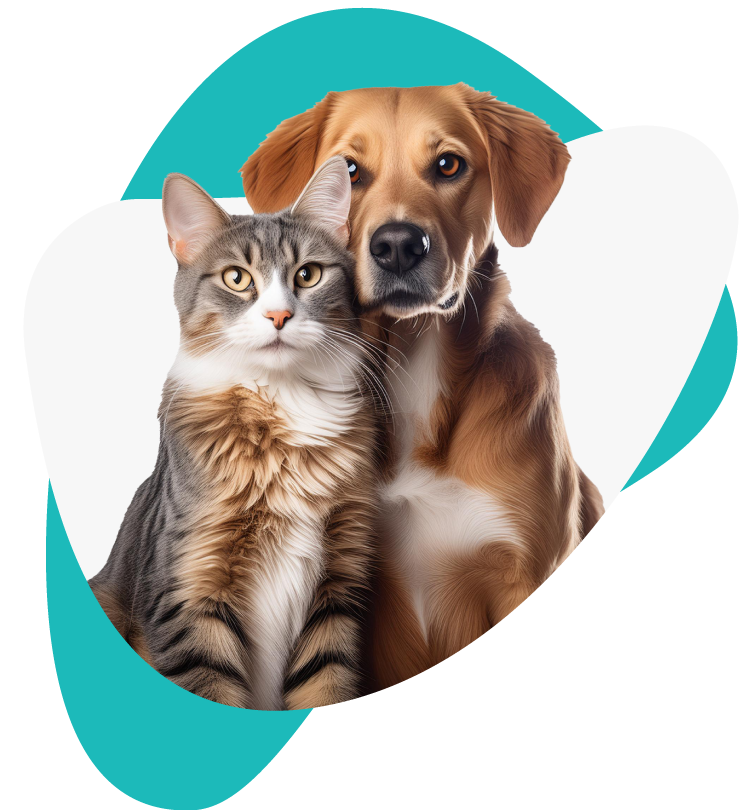Working Hours
Monday - Saturday
217-TTA-TPLO
Sunday
217-882-8756
Email/Phone Consultations/Orders
217-TTA-TPLO (217-882-8756)The surgeon can be regularly contacted via email or phone for advice from veterinary general practitioners and happy to discuss issues during recovery period.

Hospital Admission
Following consultation with your veterinarian, patients are usually admitted at scheduled date for morning pre-operative tests and are getting prepared for surgery, although in some cases may be scheduled for admission at a future date if abnormalities found. After surgical procedures, patients stay in the hospital for their recovery usually for few hours and are dismissed with comprehensive instructions.
FAQ
1What is a cranial cruciate ligament in dogs ?
The CCL is what is called the anterior cruciate ligament in humans or ACL. It is a ligament located in the back of knee joint, and its function is to give stability to this joint by keeping the tibia from sliding back and forward (tibial thrust) as well as preventing the knee from twisting inward (internal rotation).
2How does a cruciate ligament rupture occur, and why does lameness started in my pet?
Injuries to this ligament is the common cause for rear leg lameness in dogs, and can be acute or chronic in nature. Acute tears can be traumatic sports injuries, and most commonly occurs due to excessive extension and internal rotation of the leg often when a dog steps in a hole or any type of force stressing the ligament that is beyond its breaking strength while the dog is active. Likely underlying causes for chronic disease of the crutiate ligament include age-related degeneration of the ligament, obesity, conformation abnormal rear limb, and immune-mediated disease.
3What are the symptoms of a ruptured Cranial CL in dogs?
This is going to depend if the severity of injury is acute or chronic, and if it is a complete or partial rupture of the ligament. Symptoms can vary from a tow touching ground lameness associated with exercise, to a full non-weight bearing on leg.
4How does my veterinarian diagnose a teared CCL in my pet? What are before-surgical radiographs used for if the ligament can’t be visualized? What are they looking for?
CCL tears in most cases can be diagnosed on physical-orthopedic examination by obtaining a cranial drawer movement or “cranial tibial thrust” during manipulation of the knee joint. This abnormal motion is a good diagnostic point for this specific condition. Partial ligament ruptures are difficult to detect and can be negative for that sign. Ligaments can not be seen on radiography of the knee joint, but x-rays are valuable to screen for joint effusion and inflammation, presence of osteoarthritis in the stifle joint, and also to rule out other orthopedic issues.
5My pet has already been diagnosed with a torn cruciate, what are the options?
There are two types of options: conservative vs. surgical. Conservative treatment consists of rest and anti inflammatories, weight management, and other supportive medical options like laser, nutritional supplements and acupuncture. Conservative treatment is tolerated by smaller less active pets, and is less reliable in heavy patients. Small dogs treated conservatively may eventually return to function normally on the injured leg; however, instability from the torn ligament within the knee continues to exist and development of osteoarthritis is inevitable then delayed surgical options are with questionable prognosis.
6What is a TTA surgery?
TTA stands for Tibial Tuberosity Advancement, and is one of the best techniques for stabilization of cranial cruciate ligament injury in dogs. Technique was invented by Dr. Slobodan Tepic and Dr. Pierre Montavon in Zurich, Europe, and launched by Kyon in 2004 following three years of clinical tests. TTA involves an osteotomy of the non-weightbearing portion of the tibial crest. This section of the bone called the tuberosity is moved forward or advanced so that the patella strait ligament is aligned on a 90 degree angle with the tibial plateau line. By doing that, change the angle of the forces applied to the knee joint gives stabilization. Implants used to keep the tibial crest in place, includes a cage, titanium plate with fork and self-tapping titanium screws. /see TTA photo/
7When should my dog have the bowel movement after surgery?
Most dogs will not have a bowel movement for the first 1 to 3 days after surgery. Reasons that a pet will not have regular bowel movements after surgery include: fasting, anesthesia, stress and post operative pain medications.
8My pet had surgery and is not active and will not eat, What should I do?
Most pets will not eat their regular dog food right after surgery, especially if it is dry food. Offer a cooked food having a 1:1 ratio of a protein and carbohydrate source. The protein can be any meat (example: chicken breast, turkey breast, lean hamburger) that is low in fat and should be cooked. The carbohydrate can be, potato or white rice.
Try canned low fat GI by Royal Canine food.
Try Gerber brand strained meats for babies such as the chicken, beef, turkey, or veal.
Try Hill's A/D or I/D canned diets available at most veterinary hospitals.
Remember that most pets will not eat well the first few days after they get home from surgery.
9My pet is vomiting, now what?
The first thing for you to differ is whether your pet is vomiting or regurgitating. Both will result in food/liquids being brought up. Vomiting always will have retching of the abdomen prior to expulsion of the vomitus. Regurgitation is not consistent with heaving and the pet usually just opens the mouth and the food will be expelled. Usually the regurgitate material will be clear or brownish colored fluid. Next is to identify the reason of the vomiting or regurgitation. Medications such as antibiotics, pain medications, sedatives commonly cause vomiting after surgery. Usually the pet will vomit or appear nauseated within 1 hour of administration of the medication. The medication in some cases may be changed to a different one, or may be discontinued. Stomach upset from anesthesia is a potential cause of vomiting and will resolve within a couple of days.
Consult a veterinary care professional if the vomiting continues for more than a couple of days.
Consult a veterinary care professional if the vomiting continues for more than a couple of days.
10How do I determine that my pet is in pain after surgery?
Signs of pain will include:
Crying or shaking
Biting if you get near the incision, grimacing (lips are pulled back)
Depressed facial expression
Panting and pacing
Restlessness and not sleeping well
Crying or shaking
Biting if you get near the incision, grimacing (lips are pulled back)
Depressed facial expression
Panting and pacing
Restlessness and not sleeping well
Keep in Mind
If a patient licks the incision, the healing process will be delayed. Licking can tear stitches and cause the incision to open, that can become a severe habit that is difficult to break. Licking can start infection as the mouth has many bacteria. Dogs will often lick the incision when the owner is not watching such as work or night time. If the skin looks red or excoriated the most likely cause is licking.
The following can be tried: Elizabethan collar can be placed; this will not help stop your pet from scratching at the region. A tee shirt can be used to cover an incision on the chest or abdomen. A bandage or sock can be used to cover an incision on a limb; fasten the top of the sock to the dog's limb with roll gauze. No lick Vet wrap is also a option.
The following can be tried: Elizabethan collar can be placed; this will not help stop your pet from scratching at the region. A tee shirt can be used to cover an incision on the chest or abdomen. A bandage or sock can be used to cover an incision on a limb; fasten the top of the sock to the dog's limb with roll gauze. No lick Vet wrap is also a option.


